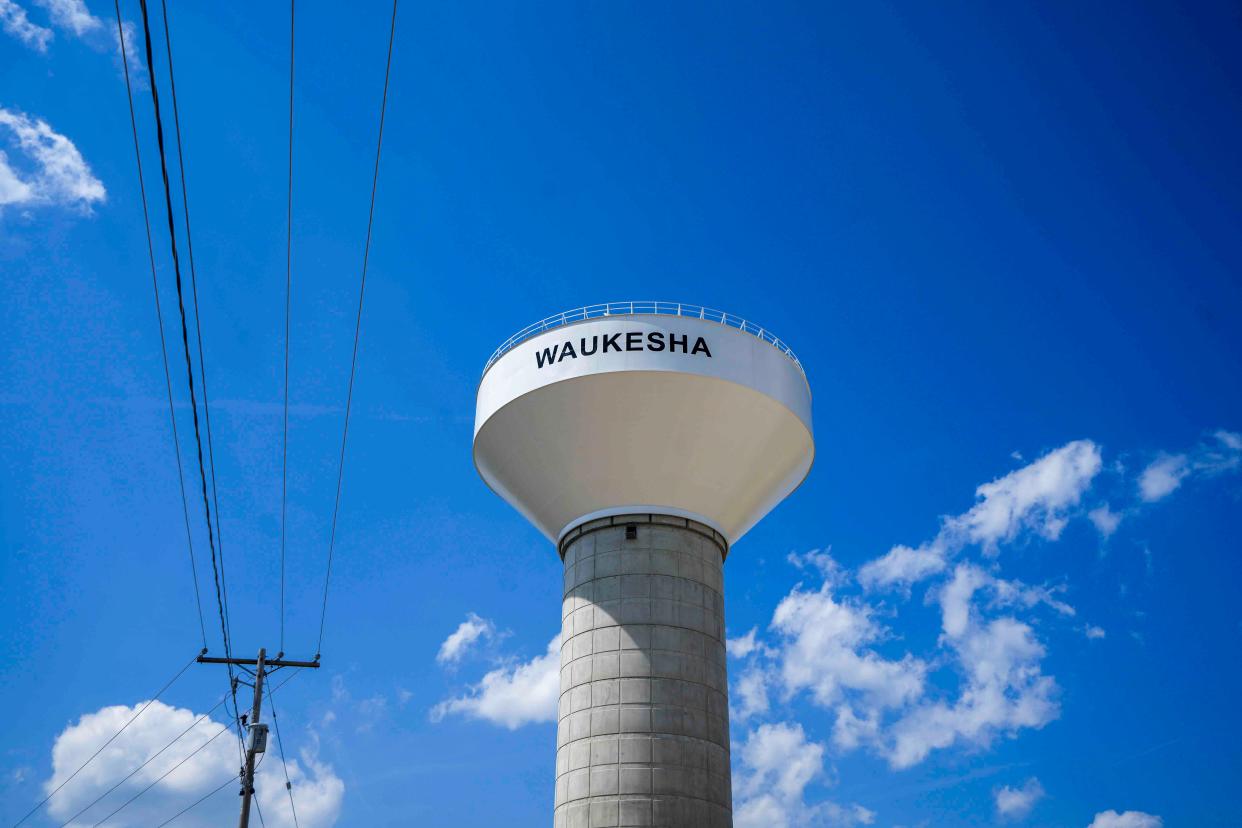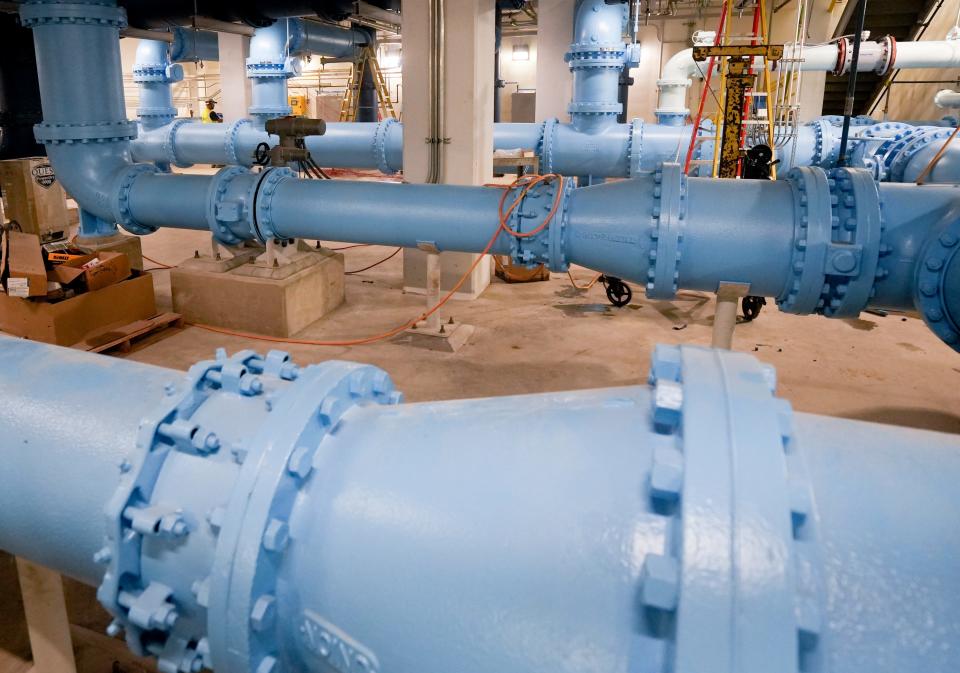Here are answers to 5 questions about Waukesha's approaching transition to lake water

WAUKESHA - As the pipeline system that will deliver Lake Michigan water to the city of Waukesha stands ready, officials know there will be more questions right up until the point when the valve is turned, so to speak.
In reality, the water utilities in both the cities of Milwaukee and Waukesha will be transitioning the new $286 million system into full-fledged use of lake water weeks before the day Waukesha officially turns off its groundwater wells. The moment in time won't be so dramatic, in that respect. But people have reason to wonder about certain aspects right now.
So here are five "last-minute" questions, answered with the assistance of Dan Duchniak, general manager of Waukesha Water Utility, starting with the transitioning steps now at hand.

Step by step, what will happen between now and the completion of Waukesha's water transition?
The 36-mile water supply and return flow pipeline system is built, but it's not exactly ready to go yet. What remains mostly includes testing and sanitizing the system and some last-minute work at the new pumping station at what was once the Nike missile site.
Specifically, the water supply line needs to be flushed and tested to ensure it works properly and passes all safe water tests to bring water to the city, Duchniak said in mid-August.
At the Waukesha Booster Pump Station site on Broadway east of Les Paul Parkway, some final pieces of equipment were being installed, which is expected prior to Sept. 1, and then the pumping station will be tested to ensure it is in proper working order.
"Once that's completed, we will work through the commissioning process, which requires us to test and sample all the facilities before they can be placed into service," he said. "This process will begin at the end of August and will take two to three weeks to complete."
The utility also has to keep an eye on the old pipes that have been used to deliver groundwater historically. "Waukesha crews continue to prepare the existing distribution system for the actual transition from groundwater to 100% Lake Michigan water. Right now, we are anticipating that will take place in mid-September," Duchniak said.

How will the taste of the water in Waukesha change?
One point officials have acknowledged is that the water won't taste the same. But what the water first tastes like during the transition and what it will taste like later will likely be noticeably different.
Waukesha has traditionally used chlorine to sanitize its groundwater supply. Milwaukee Water Utility uses chloramines, a mix of chlorine and ammonia, in its delivery of lake water. Officials say the mix will be more concentrated at first, a necessary safety step.
"During the transition, as groundwater and Lake Michigan water supplies mix together, you could notice a temporary chlorine-like taste or smell more than usual," Duchniak said. "This is associated with the process to ensure a smooth transition from one supply to the other and should only occur for a day or two, if it is noticeable at all."
Regardless, the water is safe to drink and consistent with regulatory standards. But Duchniak said people opt to flush their pipes by running all of the cold-water faucets wide-open simultaneously for three to five minutes and, at the same time, flushing toilets several times. However, if that taste, or discoloration, continues beyond three days, he encourages users to contact the Waukesha Water Utility at 262-521-5272.
Once the transition to is complete, the water still might seem different in a way that has nothing to do with disinfectants. That's because Lake Michigan water has less mineral content. Not everyone will notice the difference, officials have said.
What should be done about water softeners currently in use?
Waukesha Water Utility and the Great Water Alliance have been discussing the water softener question for several years — a natural one, given that Lake Michigan water is least 60% softer than Waukesha's current groundwater supply.
"Whether or not to use a softener is a personal choice, but most users of Lake Michigan water do not use softeners," Duchniak said.
First, for those who decide not to use a water softener any longer, a plumber can remove it completely. At the very least, the bypass valve on the softening unit should be used to prevent water from flowing into the unit. (In fact, Waukesha Water Utility is recommending that all water softeners be bypassed during the transition so the softener isn't affected by the short-term changes and for a month or two after so users can decide if they're satisfied with the relative softness of the new water supply.)
"You may also want to ask friends in the 16 communities that use Milwaukee water about their experience with softening," Duchniak said.
Those who decide to continue to use a water softener will have to have it reoptimized for the new water supply to keep salts out of the wastewater stream and help the city meet federal chloride standards, he added. Someone who is trained at optimizing softeners for hardness, salt dosage and reserve capacity will have to step in. (See information links below.)
"Softener salt is the largest source of chlorides in the wastewater discharges by the Clean Water Plant. Chlorides are harmful to fish and other aquatic life in rivers and other bodies of water," Duchniak said. "We need to reduce chloride levels or else wastewater costs for all users will go up significantly. There is no cost-effective way to remove softener salt at the Clean Water Plant, so we need to reduce the level of use at homes and businesses."
Beyond the transition, what lies ahead for Waukesha Water Utility and its customers?
While the heavy lifting is already done, the new water system will require project work for several years "to prepare the utility for the long term," Duchniak said.
First, there are the old wells to consider. Some will remain in the system, though inactive, for emergency use. Some will be formally shut down. The ones that remain will need upgraded chemical feed systems to accommodate the chloramine disinfectant used by Milwaukee Water Works. All the others will have to be "properly" abandoned and decommissioned.
Waukesha Water Utility, as part of the Great Lakes Compact agreement, will also need to regularly monitor the quality and quantities of the water sent back to Lake Michigan via the return flow pipelines leading to the Root River in the city of Franklin.
Where can people go for information about the Waukesha water transition?
Waukesha Water Utility customers can sign up for updates and information on other issues using Connect link at www.waukesha-wi.gov or by following the City of Waukesha on social media. Customers can also find detailed information about the transition and water supply at www.GreatWaterAlliance.com or at www.waukesha-water.com.
For more information about the water softener optimization program, including deadlines and a list of approved optimizers, go to www.waukesha-wi.gov/softener or call the Waukesha Clean Water Plant at 262-524-3628.
People can also call utility staff at 262-521-5272.
Links to numerous other Milwaukee Journal Sentinel articles are contained within this November 2022 story that discussed the status of the system. It includes history and details of the project.
Contact Jim Riccioli at (262) 446-6635 or james.riccioli@jrn.com. Follow him on Twitter at @jariccioli.
More: Six-bedroom nature-oriented home used as Airbnb available again in New Berlin, for $1.45M
More: Wauwatosa and Waukesha school districts start community engagement programs
More: We've changed the way we cover suburban Milwaukee. Here's what you need to know.
Our subscribers make this reporting possible. Please consider supporting local journalism by subscribing to the Journal Sentinel at jsonline.com/deal.
DOWNLOAD THE APP: Get the latest news, sports and more
This article originally appeared on Milwaukee Journal Sentinel: Waukesha officials answer questions on Lake Michigan water transition

